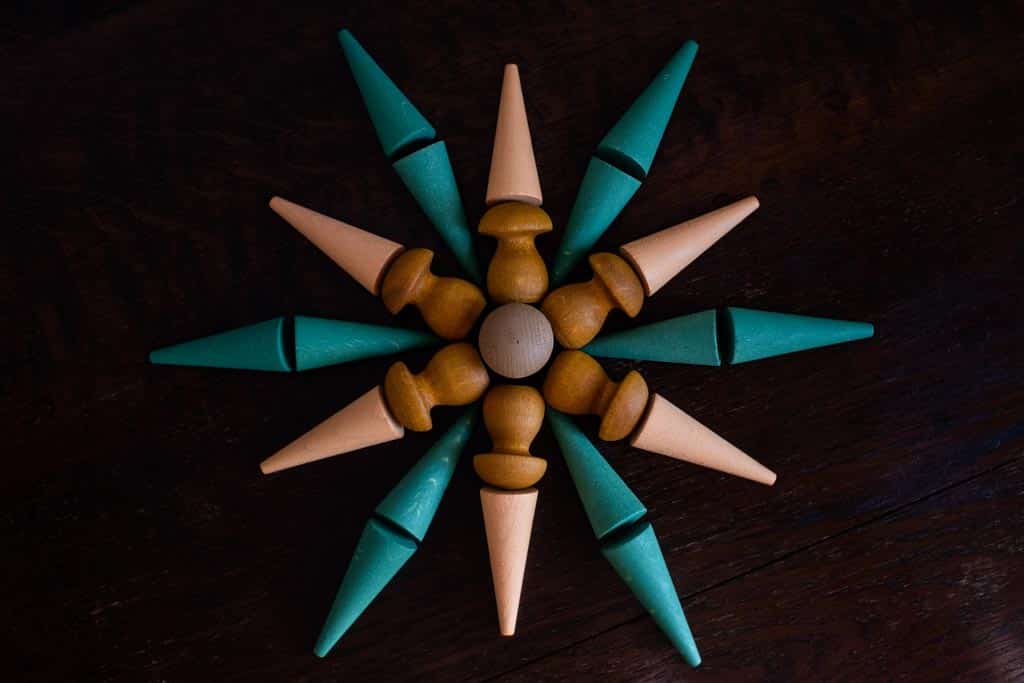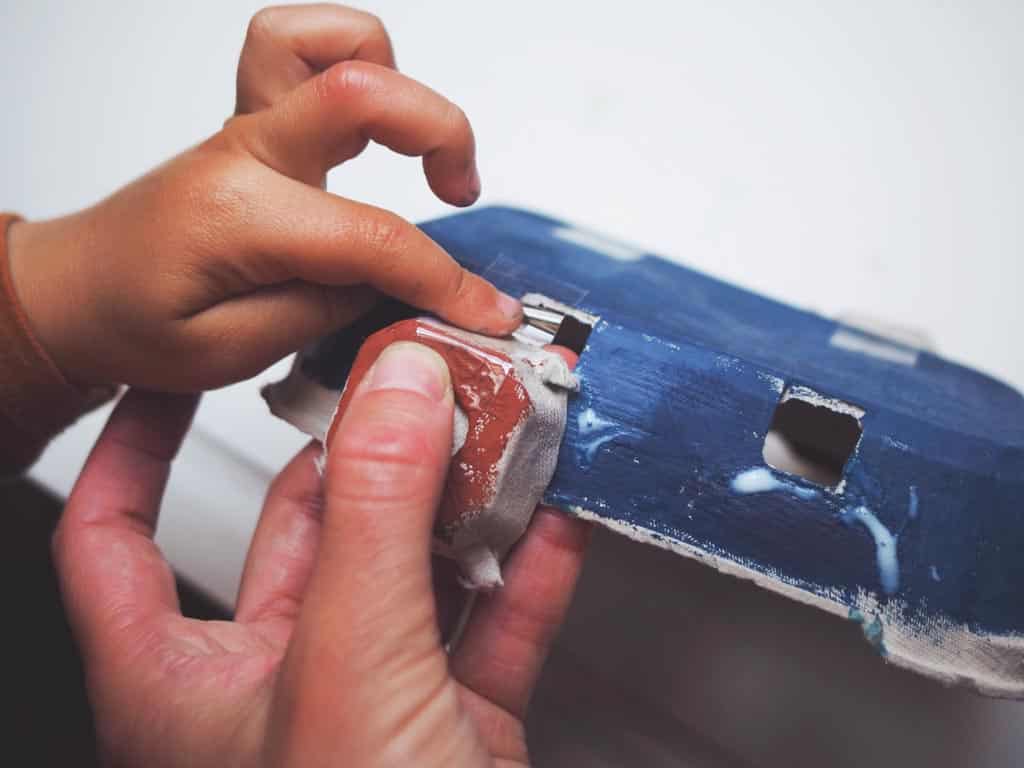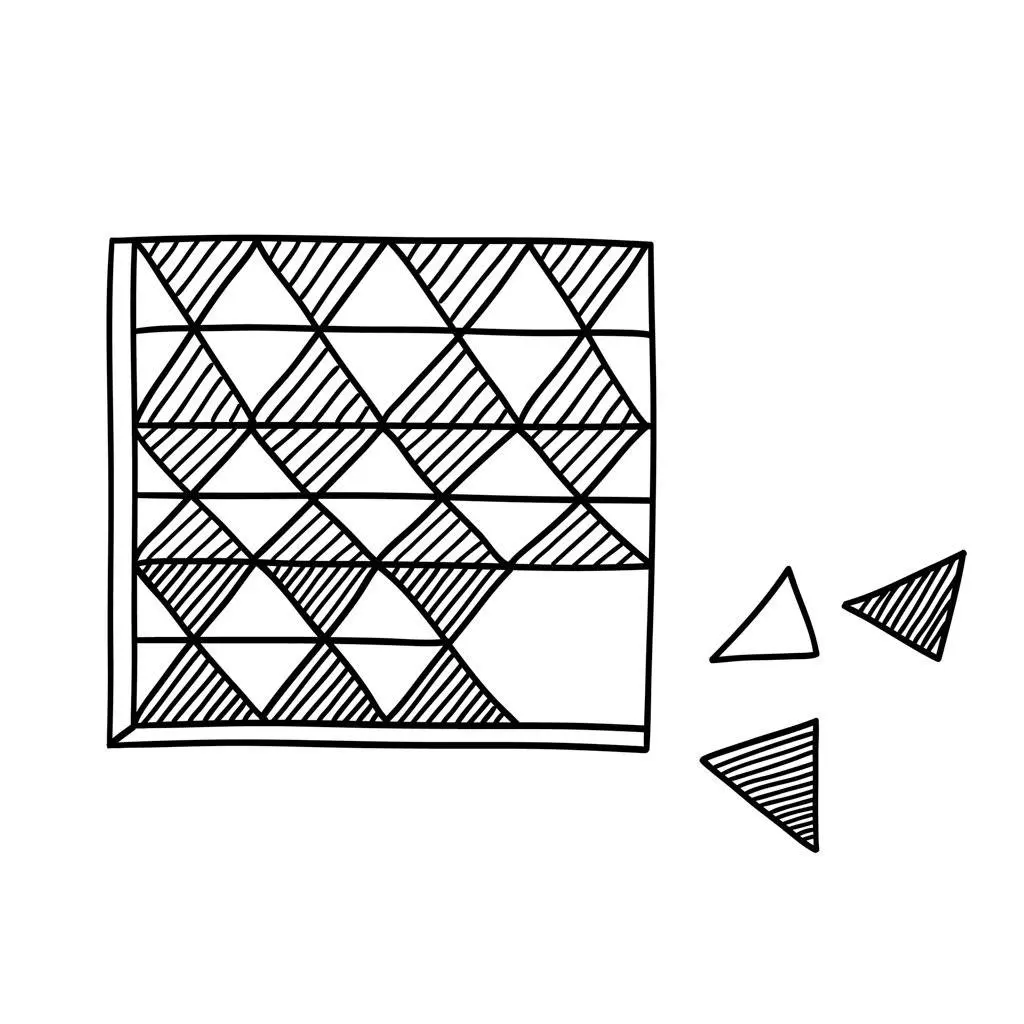A sailor went to sea, sea, sea,
To see what he could see, see, ___
One hundred, two hundred, three ___
Clap, clap, click, clap, clap, ___
x, xx, xxx, xxxx, ___
Patterns are everywhere.
And without patterns we would be lost.
They help us to predict what’s coming next. They save us from having to think so we can make quick decisions.
Children are hard-wired to spot them. Best of all, pattern activities are fun.
Let’s take a closer look.
Simple pattern activities
Getting started with pattern-making needn’t be complicated. All you need are some blocks, loose parts or craft materials. The secret is to be intentional about positioning. Where will each element go? What’s the underlying rule? Of course, with younger children these rules are unspoken but they are there nevertheless. Concepts like sequencing and seriation reveal themselves through play.
Here are some simple activities to get you started.
Block patterns. Create patterns using coloured blocks, alternating colours or sizes to form a sequence.
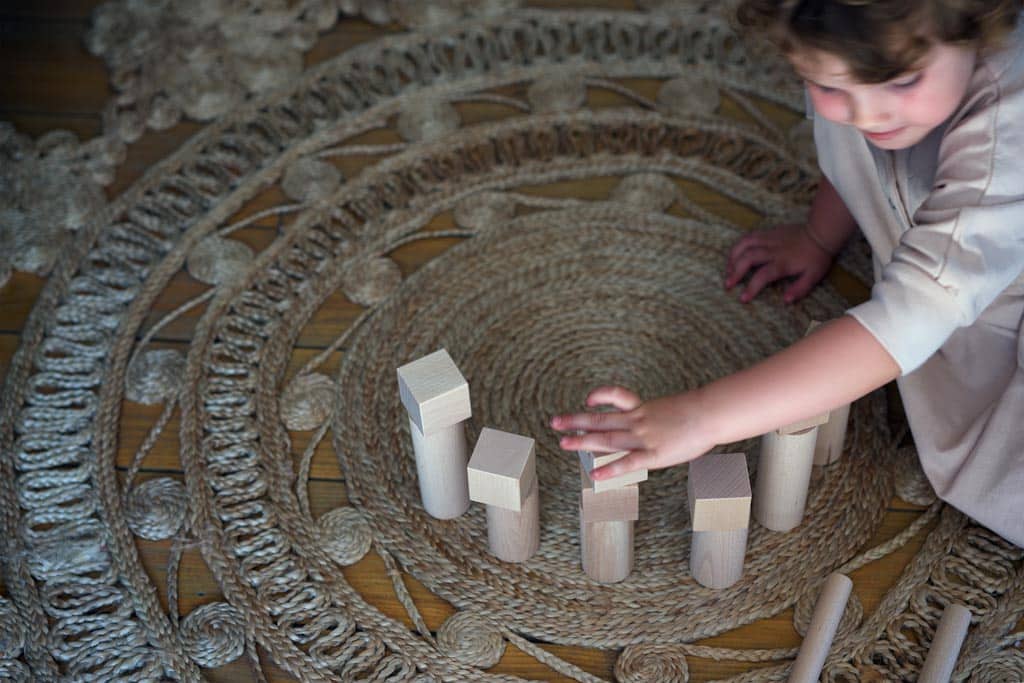
Threading patterns. Use items like popcorn, dried orange slices and beads to create tactile patterns on a string.

Potato printing. Cut a potato in half. Press it into paint and print. Even without carving a shape or having a second design you can create all kinds of patterns. Stamp onto brown paper for unique DIY wrapping paper.

Paper chain patterns. Make paper chains using coloured paper. Vary the colours to create repeating patterns.

Paper snowflakes. Learn about symmetry with this classic Christmas craft. Just take care when snipping through several sheets at once – the scissors can slip. Sharp, with adult supervision, is often safer than blunt done independently.
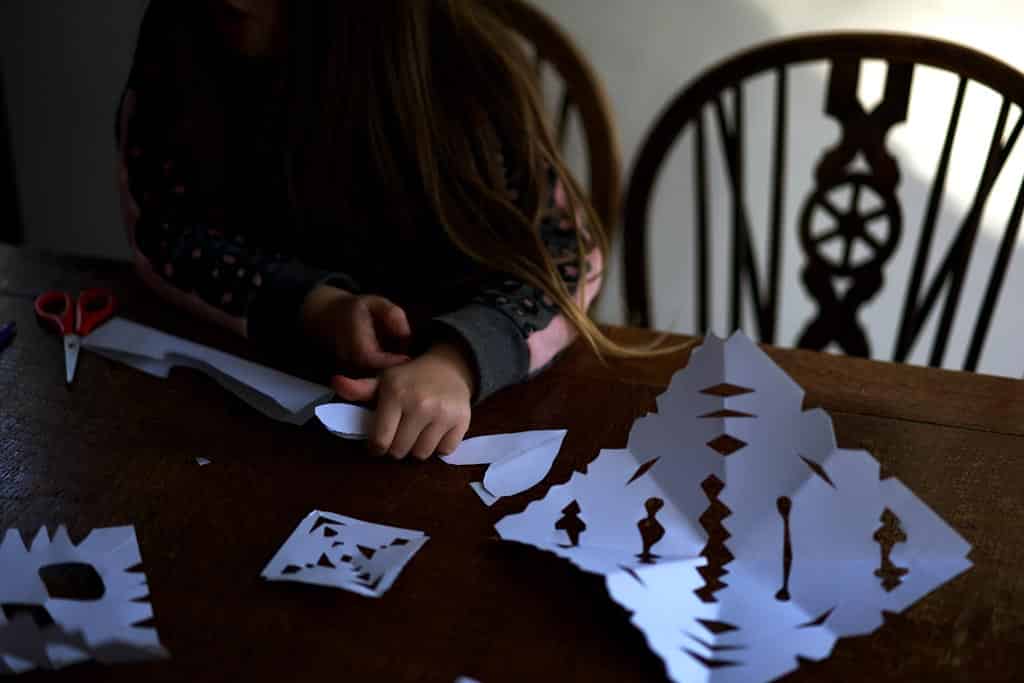
Natural materials. Use leaves, sticks, and stones to create outdoor patterns. Read more about transient art.
Pasta necklaces. Is there a more iconic pattern-making activity than threading pasta? Use coloured pasta or, better yet, paint your own in seasonal colours.
Shadow patterns. Close the curtains and turn off the light. Find a torch and stand some objects up in front of it. What kind of shadow patterns can you make? Try shining light through baubles and other decorations. Change the angle of the torch and the width of the beam. Christmas isn’t Christmas without darkness and light.
Rhythm and dance. Sing and dance along to these songs.
- Head, Shoulders, Knees, and Toes
- The Wheels on the Bus
- If You’re Happy and You Know It
- One finger, one thumb, keep moving
- The Hokey Cokey
Clapping games. If your child is very young, listen to music and simply try clapping along together . Preschoolers will enjoy clapping games like Pat-a-Cake and B-I-N-G-O. Older children will have fun with Miss Mary Mack and A Sailor Went to Sea.
Collage. Make a seasonal collage using off-cuts from decorations and Christmas cards. Can you create a repeating pattern?
Lego colour patterns. Build patterns with Lego bricks focusing on colour sequences.
Sand. Fill a tray with sand or rice and make patterns with fingers or sticks.
Pattern blocks. These commercially available pattern blocks are brilliant for creating geometric patterns. Here’s a design created by my five-year-old on living room rug but these shapes also tesselate perfectly, making them ideal for spatial reasoning challenges.
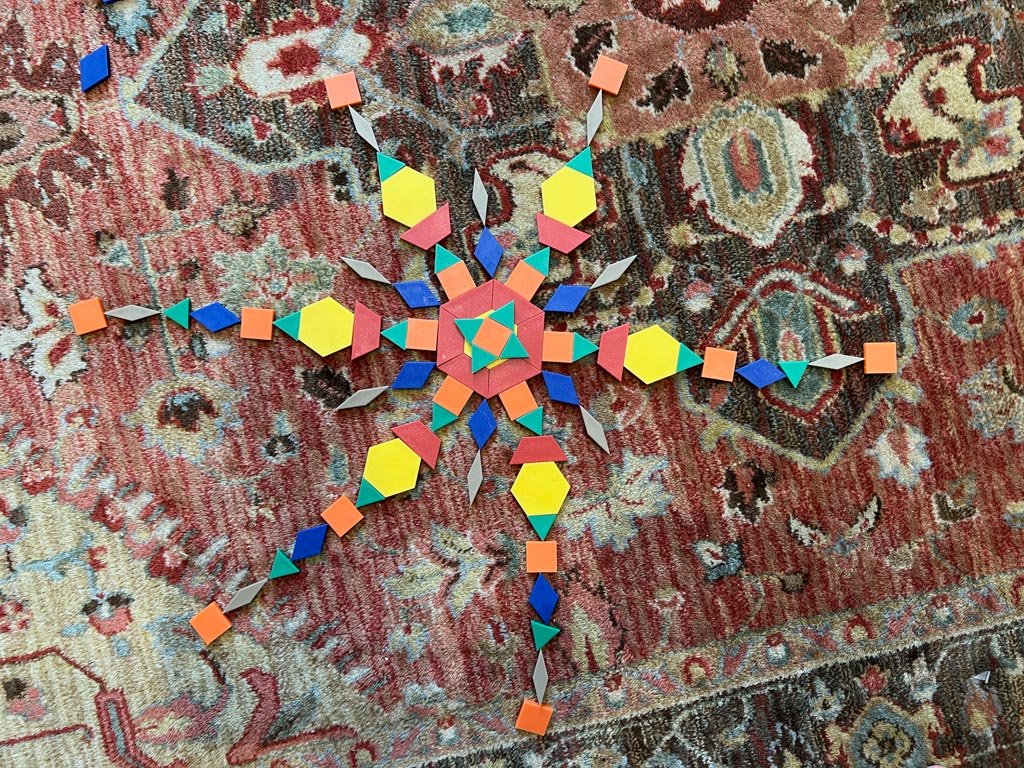
Peg boards. Did you ever have a peg board when you were young? Do you remember the patterns you made? I my house, we didn’t, but I made do with the next best thing – the logic game, Mastermind, whose board was perfect for the job.
Shape patterns. Whether you use pattern blocks or other geometric shapes, all kinds of designs – and discoveries – await.

Colour patterns. Repeat colours in order. Start with a simple, alternating pattern: black, white, black, white. Then you can get more creative. How about a rainbow?
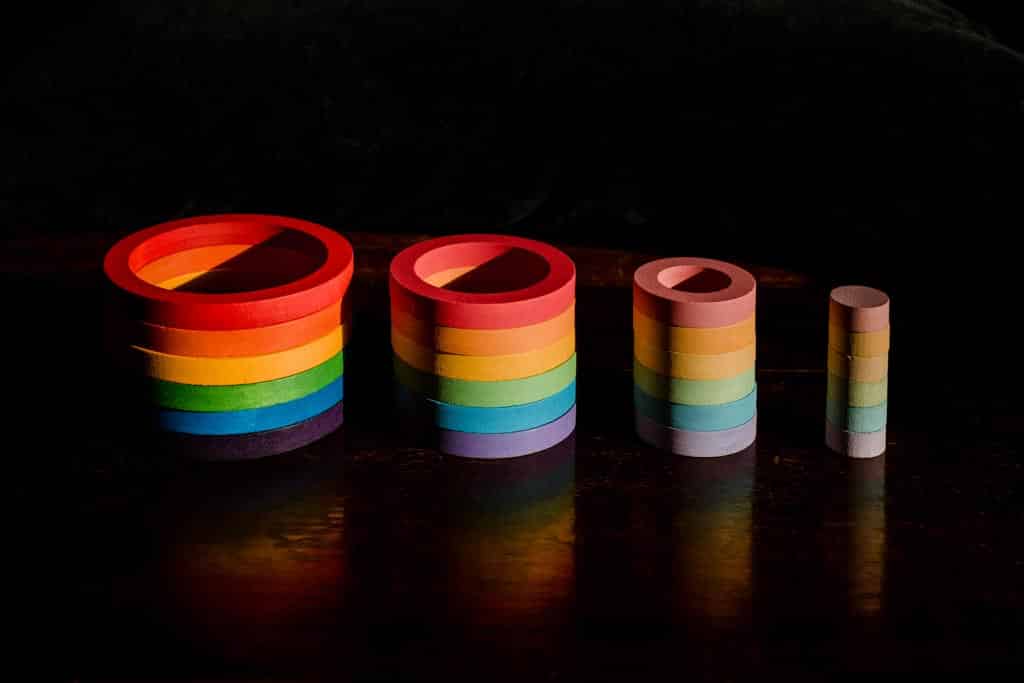
Make a pattern cards for younger children
Toddlers and younger preschoolers find it hard to follow a pattern. Offer more support by making a pattern card that they can match objects to.
Materials needed:
- A strip of card
- A counter (or any small, circular object)
- Coloured markers or crayons
- A bowl of coloured counters (or coloured blocks/loose parts like Grapat)
Creating the pattern card:
- Place the counter on the strip of card.
- Trace around the counter to draw a circle.
- Draw more circles in a row, ensuring they are of equal size and spaced evenly.
- Colour these circles in a specific pattern using your markers or crayons. For example, red, blue, red, blue, etc.
Playing the matching game:
- Give your child a bowl containing coloured counters, ensuring the colours match those on the card.
- Ask your child to place the right coloured counters on the corresponding coloured spots on the pattern card.
- Encourage them to match the entire pattern on the card with the counters.
Increase the challenge:
- For variation, you can use coloured blocks or loose parts like Grapat instead of counters.
- As your child becomes more confident, increase the complexity of the pattern or introduce new colours.
This activity is excellent for children who are still learning to create patterns on their own. It provides them with a visual pattern to copy and check against, enhancing their understanding of patterns and colours, as well as developing their fine motor skills.
Final word
There’s a lot more to pattern-making than these simple activities, of course. For a deeper dive into the world of patterns, read our guide to patterns.
Pattern activities are a brilliant way to get started with mathematical and design-focused thinking.
It’s deeply satisfying – and often challenging – for young children to create a regular pattern. The result depends as much on the gaps between as the elements themselves. Don’t worry if it’s not perfect. This comes with time and practice.
Get out the craft trolley and have fun.

